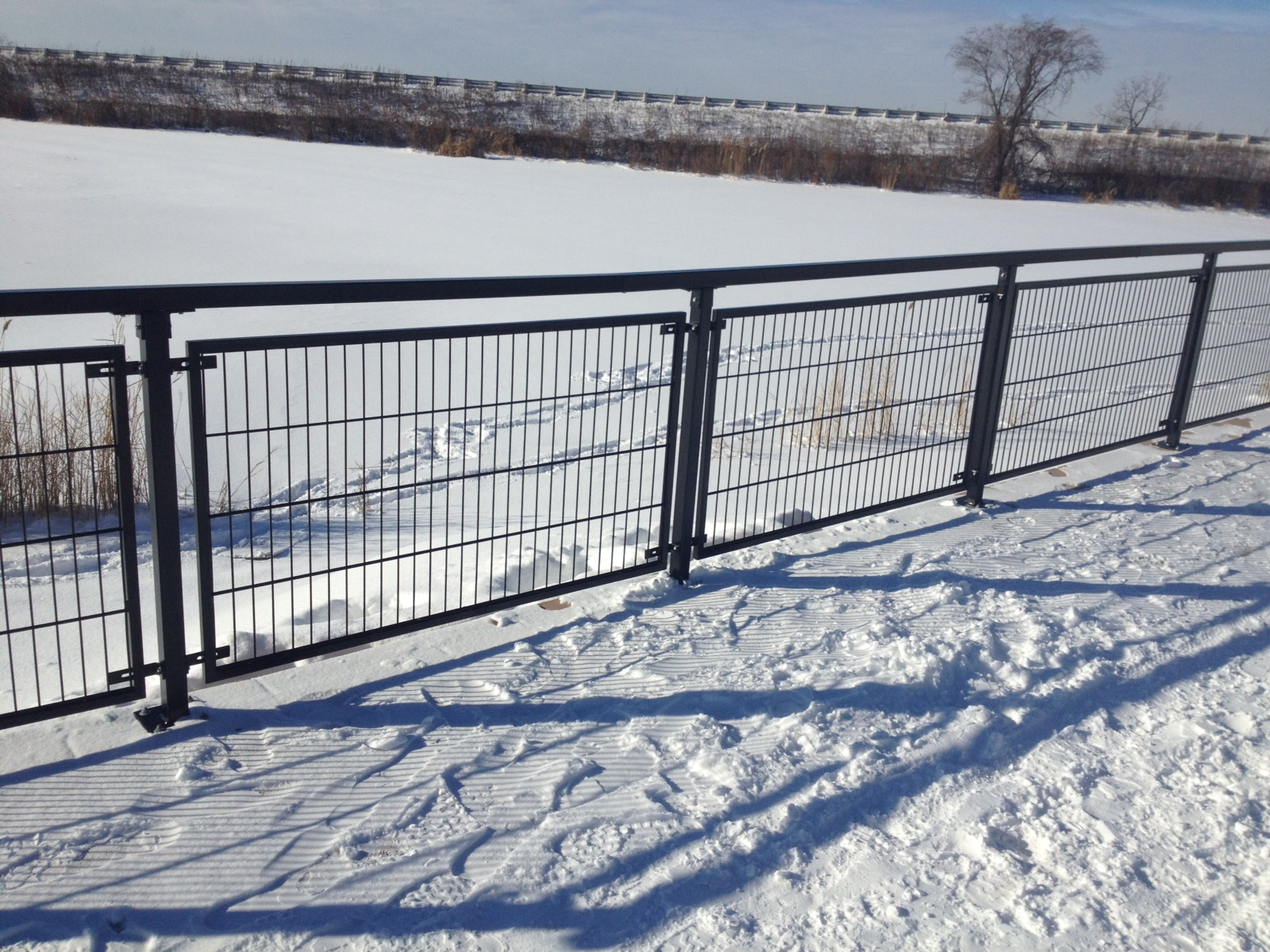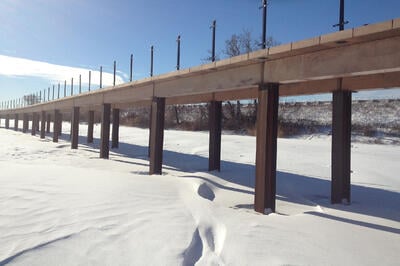 It may not be winter, but snow and ice don’t take a backseat in boardwalk design just because of the season. In Canada or northern regions of the US that see high volumes of snow and ice, salting a boardwalk or pedestrian bridge surface is an important consideration for professional designers.
It may not be winter, but snow and ice don’t take a backseat in boardwalk design just because of the season. In Canada or northern regions of the US that see high volumes of snow and ice, salting a boardwalk or pedestrian bridge surface is an important consideration for professional designers.
Generally speaking, salting is more common for city or county roads and paths that require occasional vehicular access. Pedestrian walkways aren’t always a high priority for salting, but the need does arise sometimes.
When I speak with architects and engineers on the topic of salting a concrete boardwalk, we review things like the amount of snow and ice the area typically receives, how thick our PermaTrak components will be, what steel reinforcing components we plan to use, whether pedestrians, cyclists and/or vehicles will use the boardwalk, how the owner intends to treat their other infrastructure for snow and ice, etc.
PermaTrak Concrete Boardwalks and Salt Exposure
You may have seen other concrete structures that show corrosion from salt seeping down into the steel reinforcing components. To prevent this from happening with our concrete boardwalk system, designers have the option of specifying epoxy-coated steel, adjusting the precast mix design with a corrosion inhibitor, using a fiber reinforcing material or increasing the amount of concrete that covers these steel reinforcing components.
For PermaTrak, unlike sidewalks, when reinforcing steel members are set in the precast they are independent of one another. This means that the corrosion in one bar won’t spread to others.
However, most of our customers report that they either do not salt their concrete boardwalks or that they use a brine solution as an alternative.
What About Corrosion in a Saltwater Environment?
Salting concrete for the removal of snow and ice is one thing, since it is a man-made issue and generally avoidable with a growing market of alternative deicing solutions.
An environment with consistent, natural salt exposure, however, also raises some concerns when it comes to concrete boardwalks. When you design and build concrete structures near oceans and bodies of saltwater, the potential for the corrosion of steel reinforcing from salt is real. It’s an aggressive environment for which there are design codes. In the ACI (American Concrete Institute) design code, for example, the designer will adhere to required design changes in corrosive environments.
This can mean larger concrete cover requirements. For example, PermaTrak normally has a 1.25” to 1.5” concrete cover on the bottom of our treads. With constant saltwater exposure, however, that cover can be increased to 2” or even 3” to keep the salt from reaching the steel reinforcements.
Remember that corrosion isn’t a guaranteed recipe for disaster. It doesn’t mean that the structure will necessarily collapse. The steel must be corroded in its entirety or to the point where it can no longer support the load above it for that to happen. It would take a lot of time, particularly with a significant concrete cover, for corrosion to reach that point.
 For snow, ice and saltwater exposure, the buffer of an increased concrete cover is not the only solution in preventing corrosion. There are a number of well known admixtures with corrosion inhibitors that can be added to the concrete mix that defend against corrosion, as well as the previously mentioned epoxy-coated steel, which has become a requirement for certain precast concrete structures in different parts of the US.
For snow, ice and saltwater exposure, the buffer of an increased concrete cover is not the only solution in preventing corrosion. There are a number of well known admixtures with corrosion inhibitors that can be added to the concrete mix that defend against corrosion, as well as the previously mentioned epoxy-coated steel, which has become a requirement for certain precast concrete structures in different parts of the US.
The bottom line is this: when you are specifying a boardwalk material and designing for icy conditions or harsh saltwater environments, you must consider the strength and durability of the product. Concrete boardwalks are considered among the strongest and most durable structures to provide a solution for these design challenges.
Related Articles:


